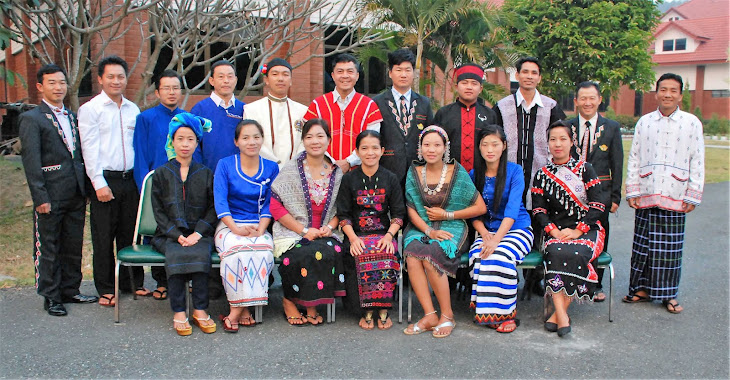

The Barefoot doctor’s training this week started off with more quizzes and student presentations. You can see here a few of the students presenting on arthritis and hypertension.
On Tuesday we had the students learn about and practice injections

on oranges. Once they had the technique down for intramuscular injections we had them practice on each other! We
had ordered 15 Tetanus vaccines for about 11 of our students as a booster after receiving their 1st shot last year. That is right. About half the class had never had a tetanus shot before last year. Three of the extra shots went to students who had one tetanus shot in their life but never a booster and one was a simple booster shot for a student. They all did very well with this skill and now can

give vaccine shots back in their homeland when needed. Some of the students live near clinics that will give children vaccines if the parent brings the child into the clinic. This may involve walking for miles or even days. Other villages do not have a clinic or sometimes the “clinic” does not have vaccines or even electricity. If you do not have electricity you can not properly store the vaccine so it is not much help in this area. Our hope is that now that the students are trained in giving vaccine injections, they can work with whatever government or non-government personnel may be in the area to help get the children and adults vaccinated. Even if vaccines only come through an area once or twice a year, you can get a lot more people immunized with more people power. Additionally, the Barefoot Doctors will have the trust of the people so hopefully the villagers will take their advice on getting their children vaccinated. We have heard many stories of villagers who refused to get their child vaccinated because of fear and mistrust of the government officials giving the shots. We have heard more examples of simply not having any vaccines available in their areas.
On Wednesday I started them on a flannel board project. This involved a flannel cloth board used to stick other flannel-backed pieces to it with pictures on them. I had them break into 4 small groups to prepare the projects.

The presentations got off to a rough start and I was worried maybe this was a bad idea and going to be a total waste of time. By Friday the presentations were amazingly good! I could follow the story without the verbal translation! The groups who did the best presentation then had to give the 5-person kitchen staff their presentation on how germs are spread and how to minimize this. You can see in these pictures that in the early presentations the drawings are small and unclear, and they put all the pictures up at once and then pulled them off and pointed to them as they talked (very distracting), even though they were clearly presented. By Friday they had great

drawings and cut outs that were large, easy to see, and simple ones, and only one idea at a time was on the board so anyone can follow along. In this way, the story is clearly presented even through language barriers.
The idea of the flannel board is you can use pictures to tell a story in addition to the words you are saying. This is particularly helpful in areas with little or no education or when teaching across language barriers. So this lesson is not only to teach them but also to teach the students how to teach others. By drawing and

preparing presentations the students learn the subject even better. If they feel this technique is useful, it is lightweight, compact, cheap, and easy to take anywhere in your back pack.


I am very proud of all the Barefoot Dr students. They are doing a great job and are passionate about their work.
Until next time Sawadee Krup,
Rick Astone






























 in front of the class! It was all in good fun, of course. Bob made a call to the construction company and the rails should be up by the end of the week. We can only begin to understand what it is like in their country, but obviously they are not encouraged to address authorities with any requests like this.
in front of the class! It was all in good fun, of course. Bob made a call to the construction company and the rails should be up by the end of the week. We can only begin to understand what it is like in their country, but obviously they are not encouraged to address authorities with any requests like this.












